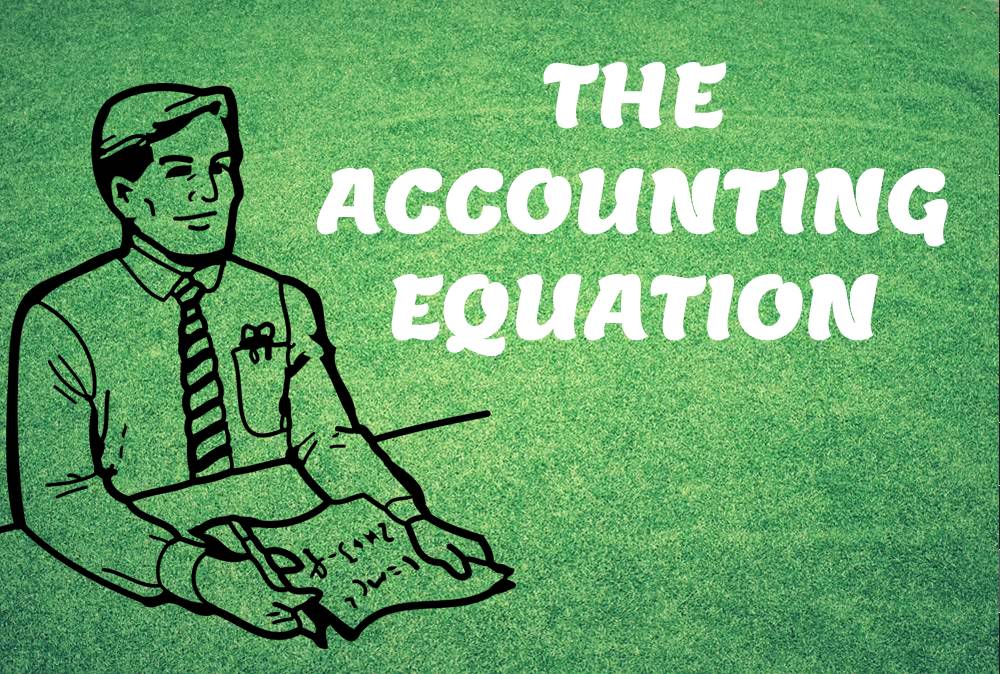- Home
- Business Processes
- Industry Knowledge
- Aerospace Industry
- Automotive Industry
- Banking Domain
- BFSI Industry
- Consumer/ FMCG Industry
- Chemicals Industry
- Engineering & Construction
- Energy Industry
- Education Domain
- Finance Domain
- Hospitality Domain
- Healthcare Industry
- Insurance Domain
- Retail Industry
- Travel and Tourism Domain
- Telecom Industry
- Leadership Skills
- eLearning
- Home
- Functional
- General Ledger (Record to Report)
- The Accounting Equation
The Accounting Equation
In this article we will help you understand the double-entry accounting system and state the accounting equation and define each element of the equation. Then we will describe and illustrate how business transactions can be recorded in terms of the resulting change in the elements of the accounting equation.
The Five Account Types:
Double-entry accounting uses five and only five account types to record all the transactions that can possibly be recorded in any accounting system. These five accounts are the basis for any accounting system, whether it is a manual or an automated accounting system. The five account types are the following:
Balance Sheet Accounts:
In accounting, the economic resources of a business are categorized under the terms of assets, liabilities, and owner's equity. These terms also refer to the three types of accounts in which a business records its transactions.
1. Assets:
Things of value that is owned and used by the business. Examples of assets include cash, land, buildings, and equipment.
2. Liabilities:
Debts that are owed by the business. These are the rights of the creditors or third parties over the assets of the business. Examples of liabilities include amounts due to suppliers, loans payable back to banks.
3. Equity:
The owner's claim to business assets. These are the rights of the owners over the assets of the business. Examples include capital invested by the owners, the shares subscribed by the public or the residual profit made by the business last year.
Profit and Loss Accounts:
The operations of the business can either result in profit or loss. It may increase the economic value over a period of time in case of profit or might decrease the economic worth in case of loss. All such activities can be recorded using two types of profit and loss accounts:
4. Revenue:
The amounts earned from the sale of goods and services. Examples include sales, interest received on bank deposits, a commission earned by the business.
5. Expenses:
Costs incurred in the course of business. Examples include purchases made for material, payment of rent, expenses for employee costs.
The balance sheet accounts are permanent accounts that carry a balance from year to year, like checking accounts, accounts receivable, and inventory accounts. The profit and loss accounts are temporary accounts that track revenues and expenses for a yearlong fiscal period and are then closed, with balances transferred to an equity account.
There can be thousands of sub-types; known as natural accounts which help in further classifying the nature of the transaction, but they all belong to one of the above lists, as practically all financial transactions can be recorded using these five types of accounts.
The Economic Impact of Transactions:
Businesses conduct transactions by exchanging goods or services for money. Transactions can take various forms, depending on the company, but whatever kind of transaction has occurred; it impacts the business's resources. The resources of a business refer to its supply of goods, services, information, or expertise that allows the business to operate and grow.
Businesses exchange items of equal value, real or perceived. Imagine that an exchange is like balancing a scale—the left side goes down (a service is given) and the right side reacts (cash is received) to maintain the balance of the scale. The exchange of goods or services, information, or expertise has an impact on the one side of the scale which is compensated by the value that the business gets in exchange that has an impact on the other side of the scale. The perceived value of both these impacts should be equal on the scale.
Accounting uses a technique to show how a transaction changes the business's resources while maintaining a balance, or showing the equal value of the exchange. The accounting equation is a tool that is applied throughout accounting activities to show how transactions affect the asset, liability, and owner's equity accounts.
The Accounting Equation:
The resources owned by a business are its assets. Examples of assets include cash, land, buildings, and equipment. The rights or claims to the assets are divided into two types:
- The Rights of the Creditors
- The Rights of the Owners
The rights of creditors are the debts of the business and are called liabilities. The rights of the owners are called owner’s equity. The following equation shows the relationship among assets, liabilities, and owner’s equity:
- Assets = Liabilities + Owner’s Equity
- This equation is called the accounting equation. Liabilities usually are shown before the owner’s equity in the accounting equation because creditors have first rights to the assets. Given any two amounts, the accounting equation may be solved for the third unknown amount. The equation shown above represents the format seen on a balance sheet.
The profit and loss accounts (representing revenues and expenses account types) also affect equity. Revenues from the sale of goods and services increase equity, while expenses incurred in the course of business decrease equity. Therefore, the accounting equation can be expanded to assets equal liabilities plus equity plus revenues minus expenses.
- Assets = Liabilities + Owner’s Equity + Revenues - Expenses
- Every transaction that has an accounting impact, will affect at least two accounts out of the five accounts explained above. If a transaction causes one side of the equation (assets) to increase, then the other side of the equation (liabilities or owner's equity) must also increase to keep the equation in balance.
You can apply the accounting equation by determining that the total of the asset accounts equals the total of the liability accounts plus the total of the owner's equity accounts. A double-entry accounting system will record the appropriate debits and credits, and track the changes to assets, liabilities, equity, revenue, and expense accounts. Keep this fundamental rule of accounting in mind when you need to determine how a transaction affects your business's resources.
Related Links
You May Also Like
-
In most of the automated financial systems, you can define more than 12 accounting periods in a financial year. This article will explain the concept of the adjustment period and the benefits of having adjustment periods. Adjustment periods have their inherent challenges for the users of financial statements and there is a workaround for those who don’t want to use adjustment periods.
-
There are two commonly used methods of accounting - Cash Basis and the Accruals Basis. Understand the difference between accruals and reversals. Recap the earlier discussion we had on accruals and reversals and see the comparison between these two different but related accounting concepts. Understand how the action of accruing results in reversals subsequently in the accounting cycle.
-
The purpose of the general ledger is to sort transaction information into meaningful categories and charts of accounts. The general ledger sorts information from the general journal and converts them into account balances and this process converts data into information, necessary to prepare financial statements. This article explains what a general ledger is and some of its major functionalities.
-
GL - Recurring Journal Entries
A “Recurring Journal” is a journal that needs to be repeated and processed periodically. Recurring Entries are business transactions that are repeated regularly, such as fixed rent or insurance to be paid every month. Learn the various methods that can be used to generate recurring journals. See some examples and explore the generic process to create recurring journals in any automated system.
-
Although technically a general ledger appears to be fairly simple compared to other processes, in large organizations, the general ledger has to provide many functionalities and it becomes considerably large and complex. Modern business organizations are complex, run multiple products and service lines, leveraging a large number of registered legal entities, and have varied reporting needs.
-
In every journal entry that is recorded, the debits and credits must be equal to ensure that the accounting equation is matched. In this article, we will focus on how to analyze and recorded transactional accounting information by applying the rule of credit and debit. We will also focus on some efficient methods of recording and analyzing transactions.
-
Operational Structures in Business
Large organizations grow through subsidiaries, joint ventures, multiple divisions and departments along with mergers and acquisitions. Leaders of these organizations typically want to analyze the business based on operational structures such as industries, functions, consumers, or product lines.
-
In this article we will discuss various types of "Management Entities". Various types of operational units, are created by management, to effectively run, manage and control their business. Different types of functional units, and divisional units, are widely used across industry.
-
Horizontal or Flat Organizational Structures
Flat organizational structure is an organizational model with relatively few or no levels of middle management between the executives and the frontline employees. Its goal is to have as little hierarchy as possible between management and staff level employees. In a flat organizational structure, employees have increased involvement in the decision-making process.
-
Team-Based Organizational Structure
Team-based structure is a relatively new structure that opposes the traditional hierarchical structure and it slowly gaining acceptance in the corporate world. In such a structure, employees come together as team in order to fulfill their tasks that serve a common goal.
Explore Our Free Training Articles or
Sign Up to Start With Our eLearning Courses

About Us
Learning
© 2023 TechnoFunc, All Rights Reserved










